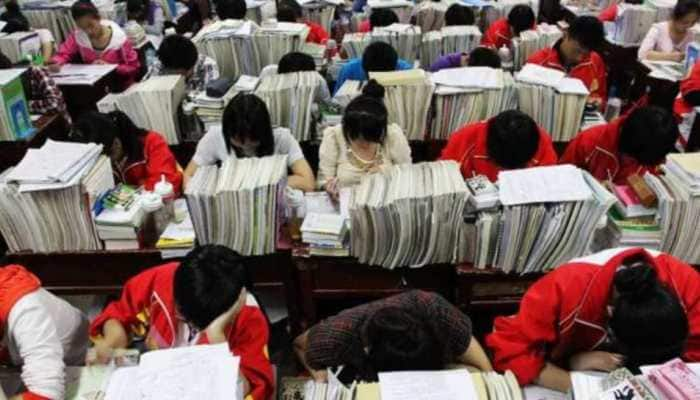Space debris problem getting worse, say scientists
In less than a quarter of a century, the number of orbiting fragments large enough to destroy a spacecraft has more than doubled, a conference in Germany heard.
Trending Photos
)
Scientists sounded the alarm Tuesday over the problems posed to space missions from orbital junk -- the accumulating debris from mankind`s six-decade exploration of the cosmos.
In less than a quarter of a century, the number of orbiting fragments large enough to destroy a spacecraft has more than doubled, a conference in Germany heard.
And the estimated tally of tiny objects -- which can harm or degrade spacecraft in the event of a collision, and are hard to track -- is now around 150 million.
"We are very much concerned," said Rolf Densing, director of operations at the European Space Agency (ESA), pleading for a worldwide effort to tackle the mess.
"This problem can only be solved globally."
The peril from debris comes from hypervelocity. Travelling at up to 28,000 kilometres (17,500 miles) per hour, even a minute object impacts with enough energy to damage the surface of a satellite or manned spacecraft.
In 1993, monitoring by ground-based radar showed there to be around 8,000 manmade objects in orbit that were larger than 10 centimetres (4.5 inches) across, a size big enough to inflict catastrophic damage, said Holger Krag, in charge of ESA`s space debris office.
"Today, we find in space roughly 5,000 objects with sizes larger than 1 metre (3.25 feet), roughly 20,000 objects with sizes over 10 centimetres... and 750,000 `flying bullets` of around one centimetre" (half an inch), he said.
"For objects larger than one millimetre (0.04 inch), 150 million is our model estimate for that."
Risks of a collision are statistically remote, but they rise as the litter increases and more and more satellites are deployed.
"The growth in the number of fragments has deviated from the linear trend in the past and has entered into the more feared exponential trend," Krag warned.
The conference in Darmstadt, whose opening speeches were broadcast on the internet, is the biggest-ever gathering dedicated to space debris.
Experts will spend four days discussing the problem, including measures to mitigate space litter such as by "de-orbiting" satellites at the end of their working lives.Krag pointed to two events that had amplified the problem at a stroke, creating debris fields with the potential to generate further junk as pieces smashed into each other.
The first was in January 2007, when China tested an anti-satellite weapon on an old Fengyun weather satellite -- a move that sparked an outcry by debris experts at the time.
The other was in February 2009, when an Iridium telecoms satellite and Kosmos-2251, a Russian military satellite, accidentally collided.
Given enough warning, satellites can shift position to avoid a collision, but this uses up fuel and potentially shortens operational life.
ESA receives a high-risk alert of collision every week on average for its 10 science satellites in low-Earth orbit, Krag said. Each has to resort to "one or two" avoidance manoeuvres per year.
In a message to the conference from the ISS, French astronaut Thomas Pesquet said the manned outpost in space was shielded for objects up to 1 cm across.
The ISS often has to make manoeuvres to avoid debris, but needs 24 hours` warning to be able to do this, using its onboard thrusters, he said.
If there is less time, "our crew will have to close all the hatches and enter the safe haven which is our Soyuz spacecraft so that we can depart the ISS in the case of a collision," he said.
"This has happened four times in the history of the ISS programme."
Stay informed on all the latest news, real-time breaking news updates, and follow all the important headlines in india news and world News on Zee News.
Live Tv







)
)
)
)
)
)
)
)
)
)
